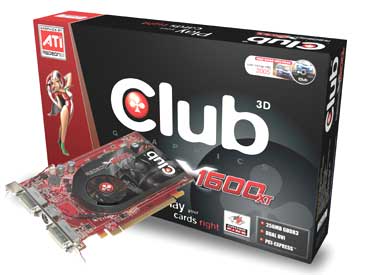Radeon X1600 XT

The graphics solution of the Canadian company has 5 vertex processors, which are built according to the 3 + 1 scheme, i.e. The vertex processor's Arithmetic Logic Unit performs two different operations simultaneously on three vector components and the fourth component. The latest generation of NVIDIA graphics has a similar organization of vertex processors. However, the G70 vertex processor processes a four-component vector and a scalar in one cycle (4+1 scheme) and does not have the ability to fetch values from textures.
The number of pixel processors is 12, but the ATI RADEON X1600 XT architecture does not provide for 12 separate processors – the latter are grouped by 4. Thus, 12 pixel processors form three so-called quads, each of which includes several blocks: Branch Execution Unit
;
Scalar Arithmetic Logic Unit 1;
Scalar Arithmetic Logic Unit 2;
Vector Arithmetic Logic Unit 1;
Vector Arithmetic Logic Unit 1.
They, in turn, can perform several operations on four pixels per cycle:
the operation of a conditional or unconditional transition (Branch);
Scalar ADD + component modification (Scalar Arithmetic Logic Unit 1);
Scalar ADD/MUL/MAD and other operations (Scalar Arithmetic Logic Unit 2);
VEC3 ADD + modification and rearrangement of components (Vector Arithmetic Logic Unit 1);
VEC3 ADD/MUL/MAD and other operations (Vector Arithmetic Logic Unit 2);
data request from TMU (occurs in parallel with one of the above operations).
In total, 6 operations per cycle, which was very good for a mainstream solution.
Specifications ATI Radeon X1600 XT
| Name | Radeon X1600XT |
| Core | RV530 |
| Process technology (µm) | 0.09 |
| Transistors (million) | 157 |
| Core frequency | 590 |
| Memory frequency (DDR) | 690 (1380) |
| Bus and memory type | GDDR3 128 Bit |
| Bandwidth (Gb/s) | 22 |
| Pixel pipelines | 12 |
| TMU per conveyor | 4 (total) |
| textures per clock | 4 |
| textures per pass | 4 |
| Vertex conveyors | 5 |
| Pixel Shaders | 3.0 |
| Vertex Shaders | 3.0 |
| Fill Rate (Mpix/s) | 2360 |
| Fill Rate (Mtex/s) | 2360 |
| DirectX | 9.0c |
| Anti-Aliasing (Max) | MS-6x |
| Anisotropic Filtering (Max) | 16x Quality |
| Memory | 128/256/512 |
| Interface | PCI-E/AGP |
| RAMDAC | 2x400 |
ATI RADEON X1600XT represented a very interesting solution with good performance for mainstream. However, he was not perfect, like everything in our world. The new mainstream solution did not show very good results in some games: for example, in "Serious Sam 2" the novelty had problems with memory allocation, and computer games using the OpenGL API were still ATI's weak point.
Need for Speed Most Wanted

The performance of the ATI RADEON X1600XT turned out to be lower than that of the solutions of the previous generation RADEON X800 XL and GeForce 6800 GT.



